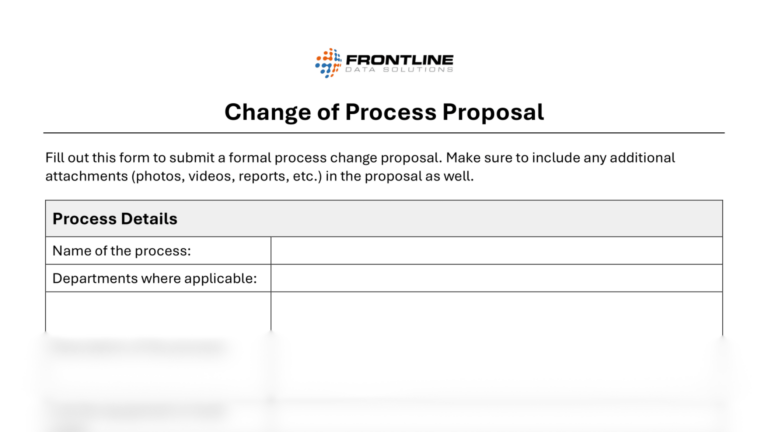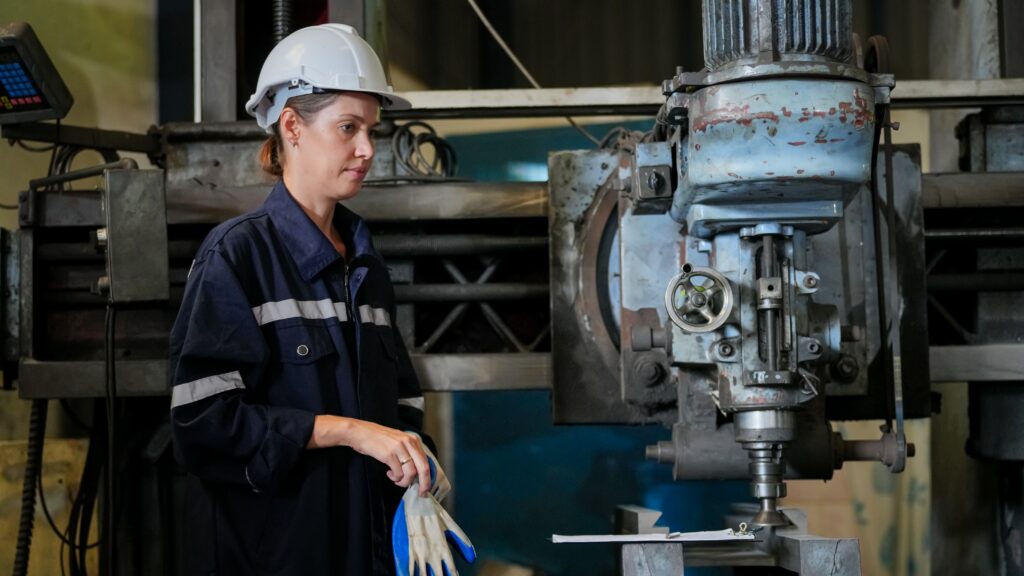Major changes in any company can have negative consequences if you don’t make them carefully or intentionally. But having a dedicated change management process in place helps you avoid critical errors or oversights. The following change management examples demonstrate how applicable this process is to all areas of operational performance.
Free Template!
Download this free change of process proposal template so your employees can submit their requests easily.
Managing Company Personnel
It’s very common to move people around within a company and oftentimes this doesn’t cause any complications. But major personnel restructuring requires more planning and attention to detail. Here are some examples of situations where the change management process would apply to personnel:
Company acquisitions and mergers: Company mergers are often complicated. They involve all sorts of changes to departments, job titles, and more. There are also all sorts of updates to deal with to things like insurance, benefits, and compensation.
Location closures: Shutting down individual facilities, stores, etc., is another example of the need for change management. You’ll have to fire employees or coordinate their transfers elsewhere. These kinds of changes impact records for the different locations where you send employees within the company.
Updating Technology Systems
Most businesses will have to update their technology systems at one point or another. And introducing new technology can have a big impact on operations. Change management helps you decrease the number of issues that come up when you change your internal operating systems. Here are some technology change management examples:
Adopting software: Most commonly, software replaces manual systems for tracking or coordinating processes. But there’s a learning curve with any new system your team adopts. Change management will help you implement software and get used to it before fully replacing your current process.
New equipment or tools: Adding new equipment always poses the risk of interrupting quality, safety, and productivity. Before workers start using new equipment, you need to review the implementation to make sure everything’s functional and safe first.
Technology gear: Another change management example is coordinating the replacement of laptops, phones, camera systems, and more. Switching to a new brand of gear or discontinuing gear requires you to catalog everything you have and dispose of it properly. Managing these changes will make the switch smoother and prevent e-waste making its way into the environment.
Modifying Policies and Procedures
Making changes to policies, processes, and procedures is another important change management example. Here are some examples of scenarios where you’d apply it:
- Reordering, removing, or replacing steps in a hazardous process
- Introducing hazardous materials or equipment to a process
- Modifying an existing workplace policy that affects health or safety
- Changing the disciplinary sequence for policy violations
Changes like these need to be well-communicated so workers have enough time to adjust. If you suddenly change the consequence for an infraction from a warning to employment termination, workers might not realize the impact of what they’re doing until it’s too late.
Change management in this scenario would involve:
- Approving or denying the policy/procedure change request
- Assessing its potential impact on the workforce
- Implementing control measures to reduce the impact
- Informing workers of the upcoming change
- Conducting training (if applicable)
Doing all this work before implementing the change drastically reduces the likelihood of negative consequences on the operation.
Switching Up Product Offerings
Having a change management strategy is essential if you want to ensure the quality of your products and services. Any change you make that might impact product safety or effectiveness should go through this process. Here are some of these types of change management examples:
- Taking a brand-new product to market
- Introducing the next generation of an existing product
- Rolling out service tiers
- Changing the material suppliers or manufacturers you use
The best part about change management is that you can factor it into your production process. You can do this by having workers make various checks throughout to ensure that outputs meet your standards. Plus, you always want to get leadership approval for major product releases or new services. This is to manage both risk and cost for the business, in addition to preserving brand value and customer relationships.
Coordinating Changes with Frontline MOC
There’s no better way to manage changes than with Frontline MOC software. It’s an easy-to-use system that allows your team to carefully review, coordinate, and implement changes. You can complete any of these change management examples with it.
The best benefit of change management software is that it eliminates variation in the process. Instead of trying to manage major organizational changes via email or word-of-mouth communication, you can keep all the information in one spot.
This means that anyone who wants to review progress for a change can do so by logging into the change log. From there, they can see tons of information like who approved the change, actions the team has taken to implement it, and notes on upcoming or past tasks.
Frontline MOC for Operational Success
In this webinar, we discuss how Frontline MOC makes change management easier and more efficient.






